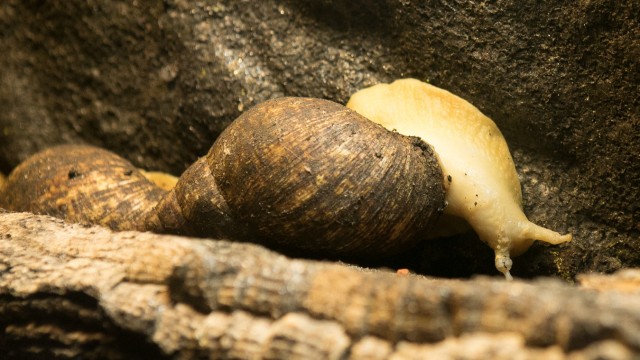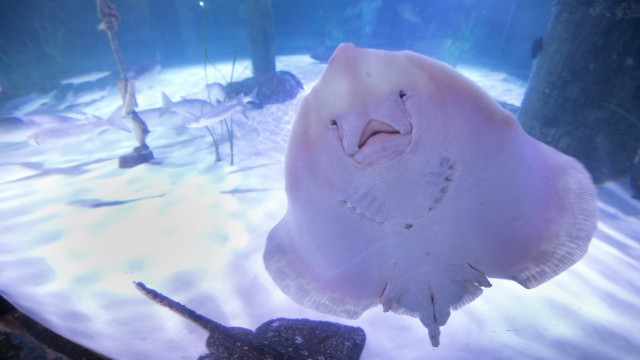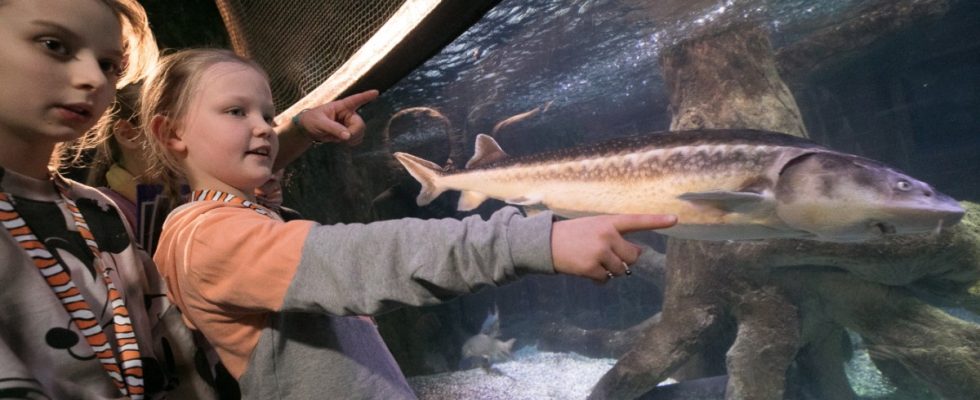Six girls huddle together in front of the glass pane of a terrarium. Two each hold a clipboard with a ballpoint pen in their hand, the other four look into the terrarium, searching. “I have nine,” says Leni. Lena writes the number down in a list. “Well, I have eight,” says eight-year-old Lana. She also holds her face close to the terrarium and looks around searching. “There’s another one back there!” she suddenly shouts. “They’re not that easy to find, are they?” asks Serdar Karagöz.
The six girls are looking for the perfectly camouflaged stick insects, an insect whose body resembles a thin stick. The young children are meeting as “young environmentalists” on this day for the fourth time in a year. A fish inventory is on the program in the Sea Life large aquarium in the Olympic Park. Serdar Karagöz is the aquarium manager and curator there. He leads the children to the individual pools and teaches them which method they can use to count most effectively.
After finding all the insects, the girls crouch down in front of the nearest window. There they should count the agate snails. “They’re disgusting!” Lana shouts and backs away from the window. She likes the green water dragon, a type of lizard, much better in a terrarium one meter away. The male agamas are hiding under some plants and branches. Lana finds it anyway, points to it with her index finger and says, “Up there.”
The girl also quickly locates the female and writes a “two” in one of the lists on the clipboard. “We still have to weigh the dragons,” says Karagöz and opens the enclosure. As he holds the lizard in his hand, the children crowd around him. The curator places the animal on a scale and reads: “Almost 490 grams.”
Curator Serdar Karagöz (left) hands out documents for counting fish.
(Photo: Florian Peljak)

Not a pretty sight for everyone: the agate snail in the snail shell.
(Photo: Florian Peljak)
Every six months, the aquarium manager and his team carry out a fish inventory. “It takes several days because we do it before and after closing times,” says Karagöz. However, he doesn’t expect a big surprise based on the current count: “Sometimes we separate the sexes so that the animals don’t reproduce uncontrollably.”
In the next room, Serdar Karagöz gives the six girls two laminated sheets of paper depicting a school of fish. “We photograph these tanks because the animals move so quickly,” explains the aquarium manager. “That’s a good trick,” Nele answers and starts counting. Her sister Leni uses a foil pen to cross out the fish she has already counted. Lina holds a cell phone in her hand and shines it on the page. “75, 76, 77, 78, …” the three young girls count in chorus. When they’re done, Karagöz asks, “Are you sure you have them all?” “Maybe it’s more or less,” says Nele and smiles sheepishly.
Children spend two years learning interesting facts about life under water
Parents and their primary school-aged children were able to apply to Sea Life as “young environmentalists” for a period of almost two years via a social media call. “My daughter painted and wrote something for it,” says Claudia Langanke. Her daughter Lea has a great enthusiasm for fish. During the program, each child receives an annual pass to the aquarium. “We don’t use them as much as we should,” says Langanke.

Also known as angel face: the underside of a nail ray.
(Photo: Florian Peljak)
While her mother talks, Lea sits in front of a large, round basin. A ray swims by right in front of her face. At the bottom of the aquarium, two tiger sharks appear as if they are standing in place. Next to Lea, the trio with Leni, Nele and Lina are sitting on a step in front of the pool. As another ray swims past with its underside turned towards the children, Serder Karagöz explains: “Did you know that this is also called the angel’s face?”
The three girls turn around. “We’ve been to the Mediterranean before. I didn’t think there could be so many animals there,” says Nele and her nine-year-old sister nods. Both are big animal lovers, and it is no coincidence that they are among the young environmentalists. Lina adds: “You always hear that you have to protect the seas, but I never knew what you were protecting. Now I know what to look out for.”

